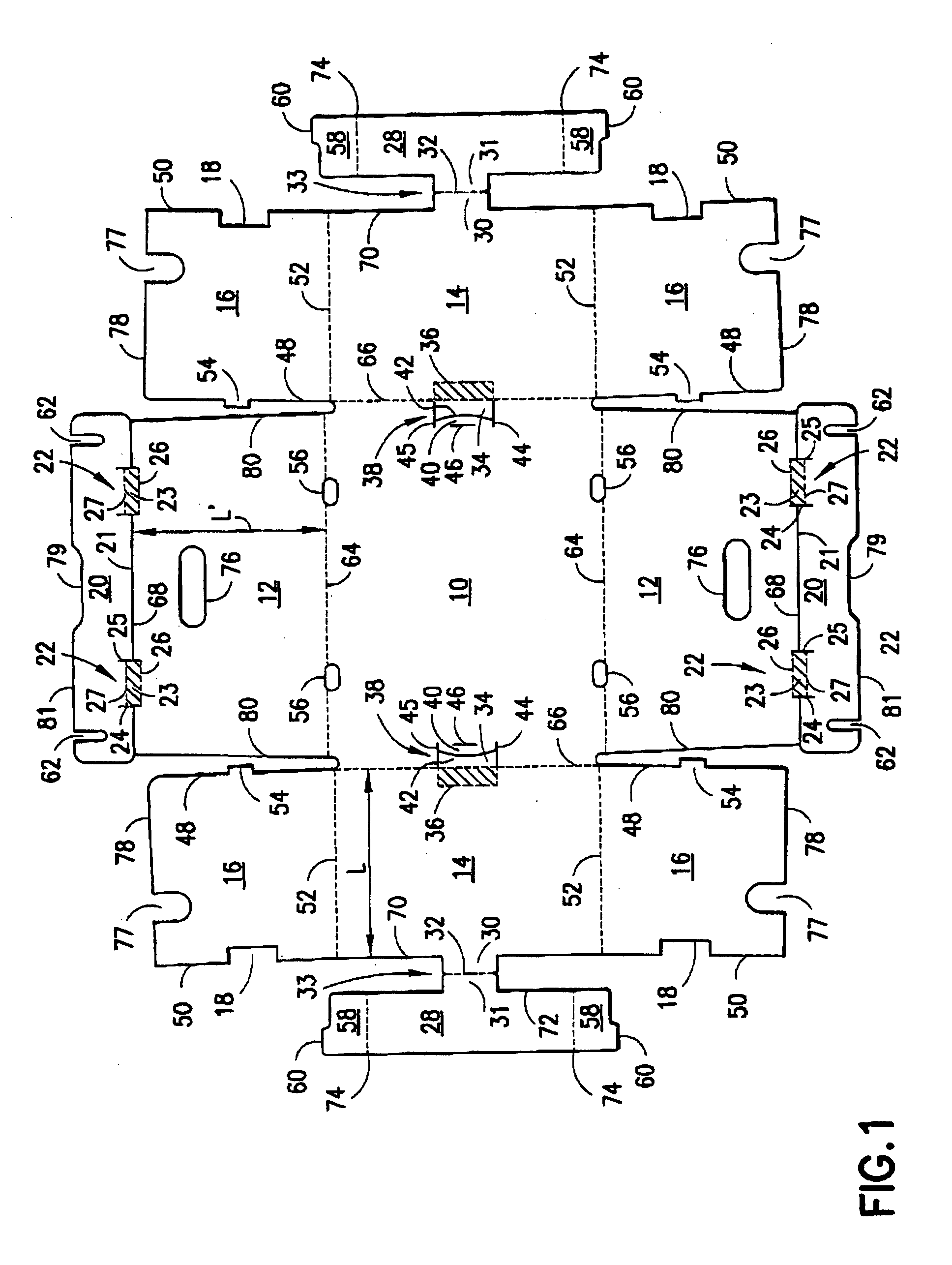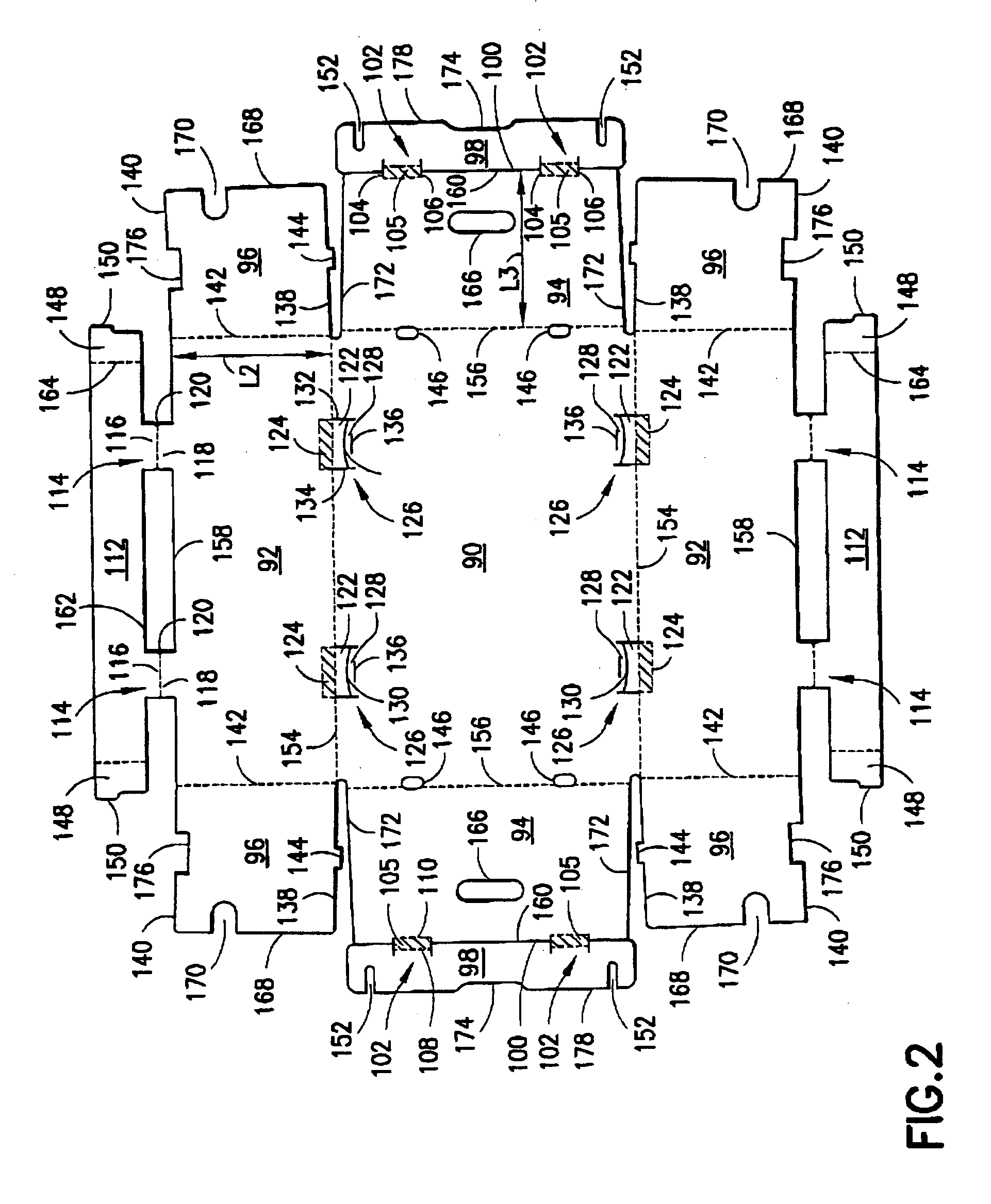Self-locking stackable tapered container with partial top stucture
- Summary
- Abstract
- Description
- Claims
- Application Information
AI Technical Summary
Benefits of technology
Problems solved by technology
Method used
Image
Examples
Embodiment Construction
[0018] A blank for a container embodying features of the present invention is shown in FIG. 1. The blank is scored for the purpose of folding into a container (i.e., a tee tray) suitable for holding, shipping or stacking a wide variety of objects, such as perishable agricultural products. The blank is preferably formed from flat corrugated paper, paperboard or such other material as known in the art as having suitable composition and thickness for the shipping and transporting of a wide variety of food items. For example, if one were to package heavier goods, a thicker grade of paperboard may be advisable.
[0019] Base panel 10 is substantially rectangular shaped and is bordered by end fold lines 66 and by side fold lines 64. Opposing end walls 14 foldably connect to the base panel 10 along fold lines 66 while opposing side walls 12 foldably connect to the base panel along fold lines 64. The end walls 14 are generally rectangular shaped and each end wall is bordered on four sides by ...
PUM
 Login to View More
Login to View More Abstract
Description
Claims
Application Information
 Login to View More
Login to View More - R&D
- Intellectual Property
- Life Sciences
- Materials
- Tech Scout
- Unparalleled Data Quality
- Higher Quality Content
- 60% Fewer Hallucinations
Browse by: Latest US Patents, China's latest patents, Technical Efficacy Thesaurus, Application Domain, Technology Topic, Popular Technical Reports.
© 2025 PatSnap. All rights reserved.Legal|Privacy policy|Modern Slavery Act Transparency Statement|Sitemap|About US| Contact US: help@patsnap.com



